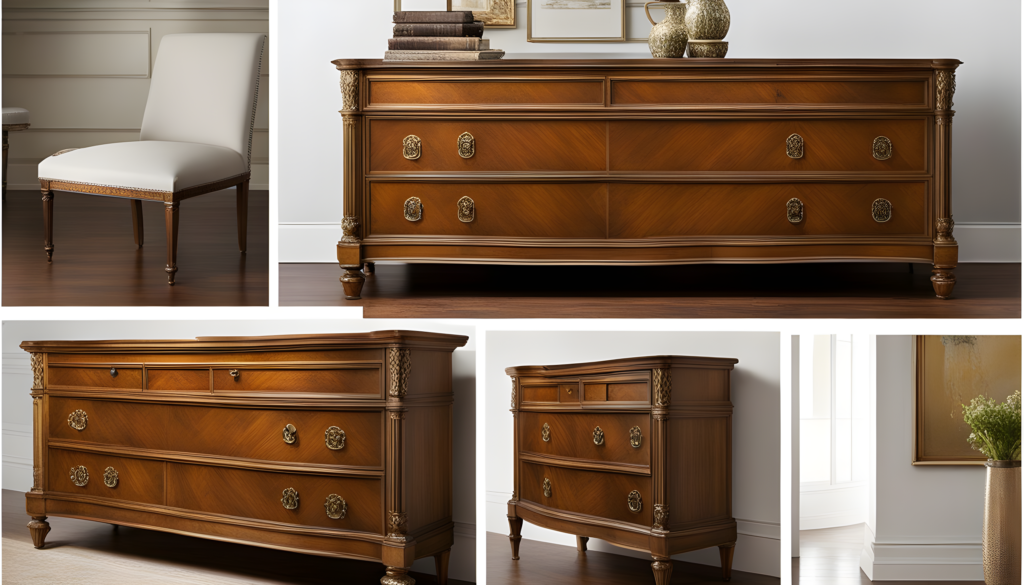Antique furniture can be a prized possession, whether it’s a cherished family heirloom or a unique find from a vintage store. When faced with the decision of whether to paint antique furniture or preserve its original finish, you’re likely to encounter a range of opinions and considerations. In this comprehensive article, we will delve into the pros and cons of painting antique furniture, addressing the various aspects of this debate. By the end, you will have a clearer understanding of whether painting antique furniture is the right choice for you.
The Allure of Antique Furniture

The Value of History and Craftsmanship
Antique furniture is more than just functional decor. It’s a testament to the craftsmanship and history of a bygone era. Every chip, scratch, and patina tells a story, and many people are drawn to these stories. The natural aging process that antique furniture undergoes adds character, charm, and, in some cases, significant value.
Antique furniture enthusiasts appreciate the beauty of wood in its natural state, and they often consider painting over it a sacrilege. The warm, rich tones of aged wood and the intricate details in antique pieces are, for many, unparalleled in their appeal.
Sentimental Value
For some, antique furniture carries deep sentimental value. It may have been passed down through generations or remind them of fond memories from the past. In these cases, the decision to paint antique furniture can be particularly challenging. Painting can alter the piece’s connection to its history, making it unrecognizable and possibly less meaningful to its owner.
Should I Paint Antique Furniture?: The answer follows the below topic.
Reasons to Paint Antique Furniture
Restoration and Preservation
While preserving the original finish is often the ideal scenario, there are instances where painting antique furniture can be justified. One primary reason is restoration. Antique furniture may suffer from significant damage, such as water stains, deep scratches, or chipped veneer. In these cases, painting can be a practical way to salvage the piece and protect it from further deterioration. It’s a form of preservation, albeit in a different way, that can extend the life of the furniture.
Style Adaptation
Tastes and interior design trends change over time, and antique furniture doesn’t always align with contemporary aesthetics. Painting antique furniture can provide an opportunity to adapt it to your current decor. By choosing the right color and finish, you can transform an antique piece into a statement that fits seamlessly with your home’s style.
Personalization
One of the most compelling reasons to paint antique furniture is the ability to personalize it. Your antique furniture can become a unique reflection of your personality and creativity. You have the freedom to choose the color, style, and finish that best suits your vision. In this way, painting antique furniture becomes an act of artistic expression.
The Painting Process

Image by fxquadro on Freepik
Preparation
If you decide to paint antique furniture, it’s essential to prepare the piece properly. This typically involves thorough cleaning, sanding, and, if necessary, repairing any damage. The better the preparation, the more successful the paint job will be. Additionally, you should remove any existing finish or varnish to ensure the new paint adheres properly.
Choosing the Right Paint
Selecting the appropriate paint is crucial to the success of your project. There are various options, such as chalk paint, milk paint, or latex paint. Each has its own characteristics, and the choice should align with your desired outcome. Consider factors like durability, sheen, and ease of application when making your decision.
Applying the Paint
The process of applying paint to antique furniture can be labor-intensive, but the results can be immensely satisfying. Ensure you use even brush strokes or a paint sprayer for a smooth finish. It may take multiple coats to achieve the desired look, so patience is key. Be prepared for drying times and any necessary touch-ups.
Caring for Painted Antique Furniture
Maintenance
Painted antique furniture requires regular maintenance to preserve its appearance and longevity. This includes dusting, cleaning, and periodic touch-ups. You may need to address any chipping or peeling paint, especially in areas of high wear and tear.
Protecting the Paint
To safeguard your newly painted antique furniture, consider applying a clear coat or wax finish. This will help protect the paint from scratches, stains, and other forms of damage. It also provides a subtle sheen that enhances the overall aesthetic.
The Reversible Factor
Reversibility
One argument against painting antique furniture is that it’s a permanent change, unlike refinishing, which can be reversed. When you paint an antique piece, it’s difficult to return it to its original state. This irreversibility is a crucial factor to consider when making your decision. Ask yourself if you’re willing to commit to this change for the long term.
Expert Opinions and Trends
Expert Opinions
It’s essential to gather insights from experts in the field of antique furniture restoration and conservation. Many experts advocate for preserving the original finish whenever possible, as it maintains the historical and monetary value of the piece. They often suggest painting only as a last resort to save a piece from extensive damage.
Current Trends

Antique furniture trends evolve over time. In recent years, there has been a growing interest in the art of painted antique furniture. Professional artisans and crafters specialize in this unique niche. They take pride in transforming vintage pieces into contemporary works of art. While this trend isn’t for everyone, it demonstrates the ongoing debate and diversity of perspectives surrounding the subject.
Conclusion
Deciding whether to paint antique furniture is a deeply personal choice. It involves weighing the sentimental value, historical significance, and aesthetic appeal against the practical need for restoration, adaptation to current decor, and personalization. The irreversible nature of painting and the opinions of experts should be considered.
Ultimately, your decision should align with your own values and the purpose you envision for the piece. Whether you choose to preserve the original finish or embark on a creative painting project, remember that antique furniture remains a unique and cherished addition to your home. It’s a reminder of the past, a piece of art, and a testament to the enduring allure of vintage craftsmanship.
FAQ
1. What is the best type of paint to use for antique furniture?
Selecting the best paint for antique furniture depends on your desired outcome. Options like chalk paint, milk paint, and latex paint are commonly used. Chalk paint provides a matte, shabby-chic finish, while milk paint offers a more authentic, aged appearance. Latex paint is durable and comes in various sheens, suitable for different styles. Choose the type of paint that aligns with your project goals and personal preferences.
2. Can I reverse the decision to paint antique furniture?
Painting antique furniture is generally considered irreversible. Once a piece has been painted, it’s challenging to return it to its original state without significant effort and potential damage to the piece. This
is an important factor to consider when deciding whether to paint antique furniture.
3. How do I care for painted antique furniture?
Caring for painted antique furniture involves regular maintenance. Dust the piece regularly to prevent buildup, and use a mild, non-abrasive cleaner for cleaning. If the paint becomes chipped or damaged, address it promptly with touch-ups. Consider applying a clear coat or wax finish to protect the paint from scratches and stains.
4. What do experts recommend regarding painting antique furniture?
Many experts in the field of antique furniture restoration and conservation advocate for preserving the original finish whenever possible. They often recommend painting antique furniture only as a last resort to save a piece from extensive damage. Their primary concern is maintaining the historical and monetary value of the piece.
5. Are there current trends related to painted antique furniture?
In recent years, there has been a growing interest in the art of painted antique furniture. Professional artisans and crafters specialize in transforming vintage pieces into contemporary works of art. This trend highlights the diversity of perspectives surrounding the subject and the creative possibilities that come with painting antique furniture. However, it’s not a trend that appeals to everyone, and the decision ultimately rests on personal preferences and project goals.
images credit: Image by pikisuperstar on Freepik







